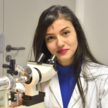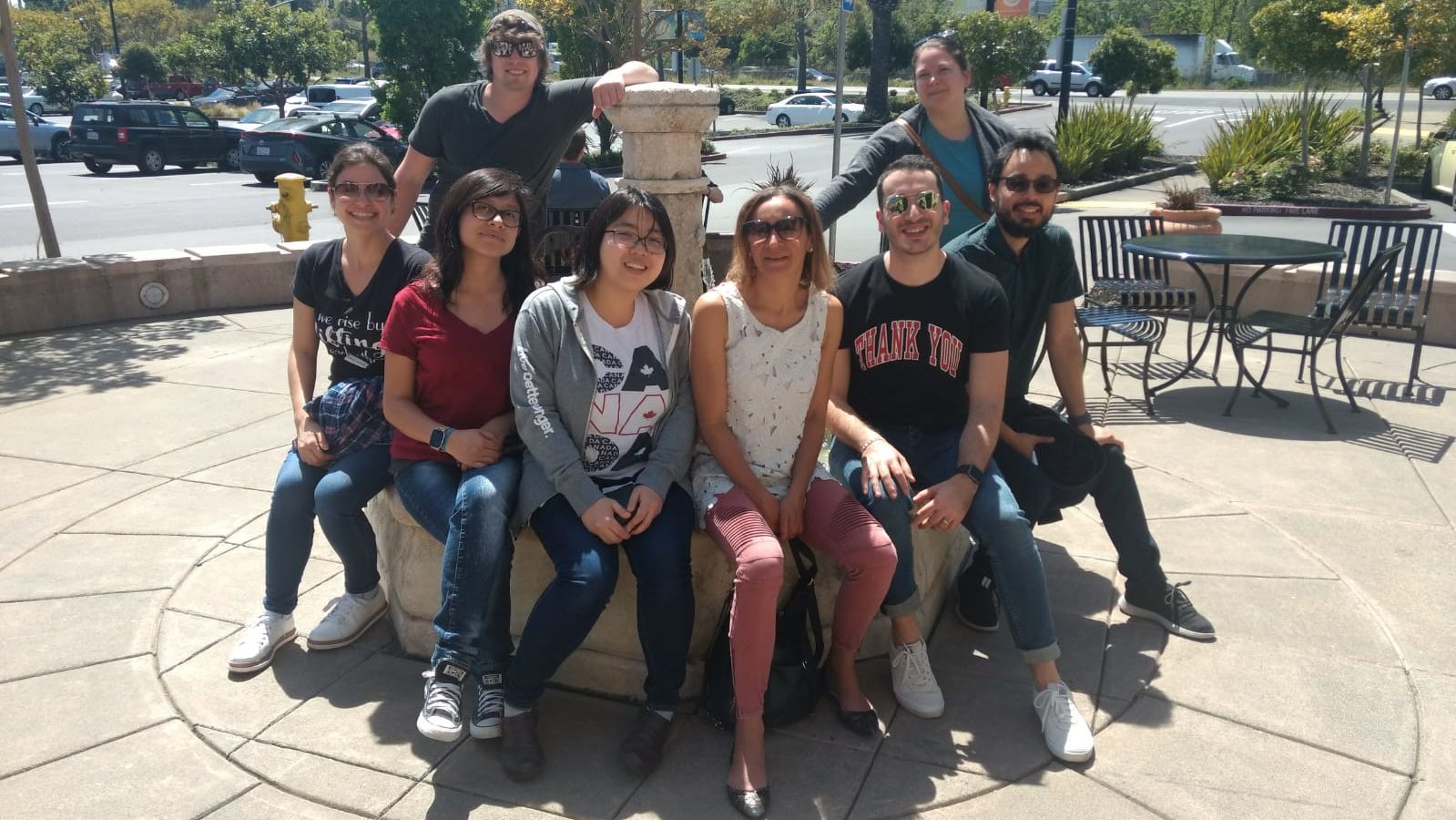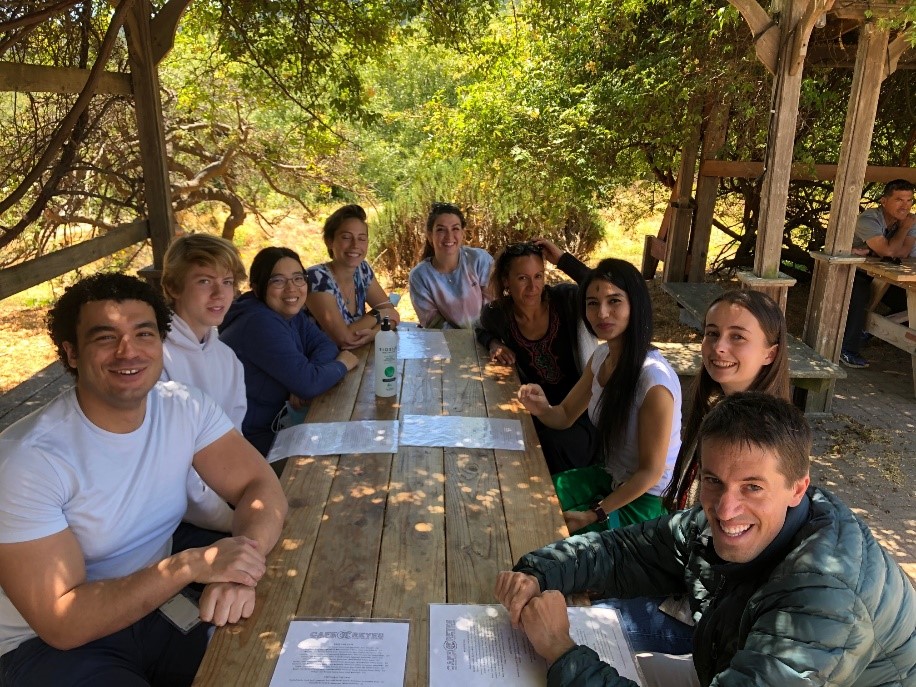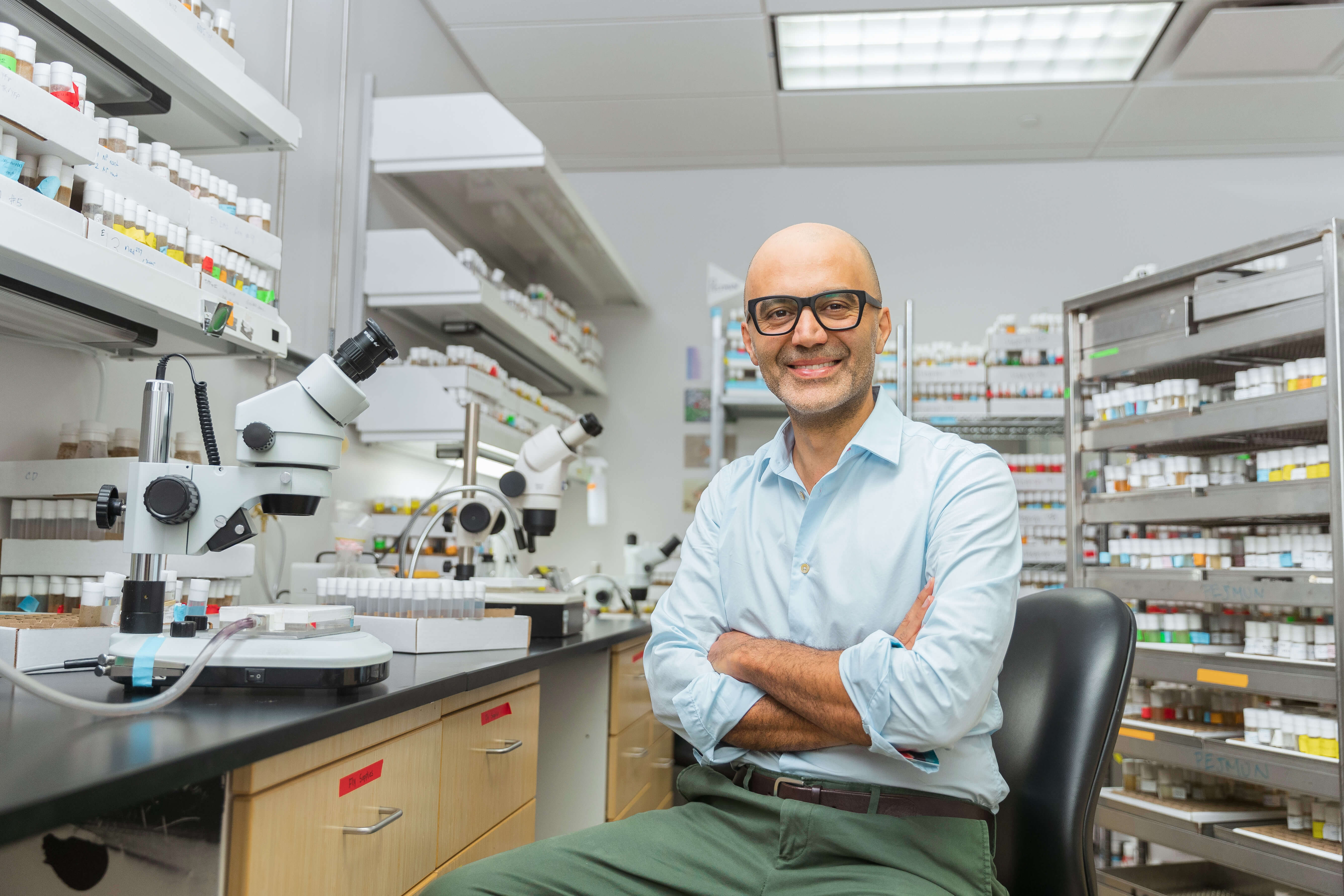HAGHIGHI LAB
Lab focus
Tight regulation of neurotransmitter release at synaptic connections between nerve cells is essential for maintaining stability and fidelity in the function of neural circuits. Accumulating evidence suggests that intrinsic mechanisms in neurons are at play to ensure that the amount of neurotransmitter release is adjusted efficiently and appropriately to achieve balance or homeostasis. Current experimental findings suggest that loss of homeostatic mechanisms in the nervous system may be among the earliest defects associated with age-dependent neurodegenerative disease.
The Haghighi lab investigates the molecular mechanisms that underlie synaptic homeostasis and regulate neurotransmitter release. We have discovered an important link between nutrient intake and the regulation of synaptic homeostasis, highlighting key molecular players in this process. In addition, our recent work has identified a role for a Parkinson’s-related gene in the regulation of synaptic homeostasis. Using both fly and mouse models, we are testing the hypothesis that an optimally functioning nervous system can enhance systemic healthspan and ultimately extend organismal lifespan.
Why it matters
We believe that our research program provides an alternative perspective on neurodegenerative disease, a perspective aimed at designing novel therapeutic approaches for preventing neurodegeneration rather than tackling its symptoms. In addition, through better understanding of the molecular mechanisms underlying synaptic homeostasis, we hope to pave the way for designing drugs that extend our healthspan by making neurons healthier and optimally functional.
What if neuronal dysfunction is a driver of aging, rather than a symptom of it? We are developing strategies to optimize neuronal function, thereby improving the function of all organs and extending the healthy years of life.
Pejmun Haghighi, PhD
CENTER DETAILS
Dr. Haghighi, a native of Iran, received his PhD from McGill University in Montreal, Canada, which was followed by a postdoctoral fellowship at the University of California, Berkeley. Dr. Haghighi was later recruited back to McGill University, where he taught and conducted research and became a tenured associate professor. He moved his laboratory to the Buck Institute in 2013.
-
 Ammar Aly PhD Candidate, USC-Buck Biology of Aging Program
Ammar Aly PhD Candidate, USC-Buck Biology of Aging ProgramAmmar is a 3rd year Ph.D. student in the Biology of Aging program at USC. He obtained his B.A. in developmental biology from Harvard College in 2017. He then spent three years as a research assistant in Dr. Paul Greengard’s laboratory at the Rockefeller University. There, he investigated the molecular signaling cascades that mediate the delayed action of antidepressant drugs. Now in the Haghighi Lab, Ammar is studying how the autonomic nervous system can be leveraged to direct stem cell fate.
AAly@buckinstitute.org
-
 Guadalupe Carrasco Lab Technician
Guadalupe Carrasco Lab TechnicianLupe is currently an undergraduate at SSU working towards his B.S. in biology. He received a B.A. in economics at SFSU in 2020 but has since returned to pursue academics to further his understanding of the complex biological systems at work. Lupe currently does part time work at the Bodega Marine Lab assisting with data synthesis and lab tech tasks, but you'll find him most days at the Haghighi lab.
GCarrasco@buckinstitute.org
-
 Olfat Malak, PhD Postdoctoral Researcher
Olfat Malak, PhD Postdoctoral ResearcherOlfat is an electrophysiologist by training who obtained her bachelor’s degree in human and animal developmental biology at the Lebanese University, Beirut, Lebanon. She received her Master’s and PhD at the University of Nantes, Institut du thorax, Nantes, France. During her PhD, Olfat studied the molecular mechanisms underlying cardiac, neuronal and muscular channelopathies using peptides that mimic specific parts of ion channels. She then received a visiting junior scholar fellowship from the France-Stanford Center for Interdisciplinary Studies and joined Dr. Joseph Wu’s lab at Stanford University to model cardiac diseases using patient-specific induced pluripotent stem cell-derived cardiomyocytes (iPSC-CMs). Now with the Haghighi Lab, she aims to improve our understanding of how synaptic transmission in sympathetic nervous system regulates organ function as people age.
OMalak@buckinstitute.org
-
 Myriam Moujahidine Administrative Lab Manager
Myriam Moujahidine Administrative Lab ManagerMyriam obtained her master’s degree in Molecular Biology at l'Université de Montréal, Montreal, Canada. She worked for 4 years as research assistant at McGill University, Montreal, Canada. Before re-joining the Haghighi Lab at the Buck, she also worked 6 years as a public health specialist for the Communication Branch of the Canadian Institute for Health Information (CIHI).
MMoujahidine@buckinstitute.org
-
 Andrew Rosko Research Associate
Andrew Rosko Research AssociateAndrew received his bachelor’s degree in chemical biology at UC Berkeley, and went on to receive a Master’s of Science in computational biology and bioinformatics from Duke University. His thesis work was on metabolic modeling using flux balance analysis in archaea. In the Haghighi Lab, he has been working on analyzing metabolomic data as well as developing open source software to process neuronal recordings.
ARosko@buckinstitute.org
-
M. C.Mario Calderon
-
H. C.Helen Cifuentes
-
C. D.Cameron DuBose
-
L. G.Lindsay Gray
-
G. K.Grant Kauwe, PhD
-
E. L.Edward Liao, PhD
-
E. M.Elie Maksoud
-
J. F.Jessica Feria Pliego
LAB GALLERY


Selected Publications
- Maksoud E., Liao E. H., and Haghighi A.P.* (2019) A Neuron-Glial Trans-Signaling Cascade Mediates LRRK2-Induced Neurodegeneration. Cell Reports., DOI: j.celrep.2019.01.077
- Liao, E. H., Gray, L., Tsurudome, K., El-Mounzer, W., Elazzouzi, F., Baim, C., Farzin, S., Calderon, M. R., Kauwe, G., Haghighi, A.P. (2018). Kinesin Khc-73/KIF13B modulates retrograde BMP signaling by influencing endosomal dynamics at the Drosophila neuromuscular junction. PLoS Genetics, 14(1), e1007184.
- Chong, Y., Saviuk, N., Pie, B., Basisty, N., Quinn, R., Schilling, B., Sonenberg, N., Cooper, E., Haghighi A. P. (2018). Refinement of synapses without postsynaptic activity: Role for a 4E-BP regulated mechanism. Cell Reports, 23, 11–22. DOI: 10.1016/j.celrep.2018.03.040.
- Kauwe, G., Tsurudome, K., Penney, J., Mori, M., Gray, L., Calderon, M. R., Sonenberg, N., Haghighi, A. P. (2016). Acute fasting regulates retrograde synaptic enhancement through a 4E-BP-dependent mechanism. Neuron, 92, 1204–1212.
- Penney, J., Tsurudome, K., Liao, E. H., Kauwe, G., Gray, L., Yanagiya, A., Calderon, M. R., Sonenberg, N., Haghighi, A. P. (201 July 19). LRRK2 regulates retrograde synaptic compensation at the Drosophila neuromuscular junction. Nature Comm, 7, 12188. DOI: 10.1038/ncomms12188.
- Penney, J., Tsurudome, K., Liao, E. H., Livingstone, M., Gonzalez, M., Sonenberg, N., Haghighi, A. P. (2012 Apr 12). TOR is required for the retrograde regulation of synaptic homeostasis at the Drosophila neuromuscular junction. Neuron, 74(1), 166–178.
- Tsurudome, K., Tsang, K., Liao, E. H., Yang, J. S., Elazzouzi, F., He, T., Chishti, A., Lnenicka, G., Lai, E. C., Haghighi, A. P. (2012). The Drosophila miR-310 cluster negatively regulates synaptic strength at the neuromuscular junction. Neuron, 68, 879–893.
- Ball, R. W., Warren-Paquin, M., Tsurudome, K., Liao, E., Elazzouzi, F., Cavanagh, C., An, B. S., Wang, T. T., White, J. H., Haghighi, A. P. (2012 May 27). Retrograde BMP signaling controls synaptic growth at the NMJ by regulating Trio expression in motor neurons. Neuron, 66(4), 536–49.



